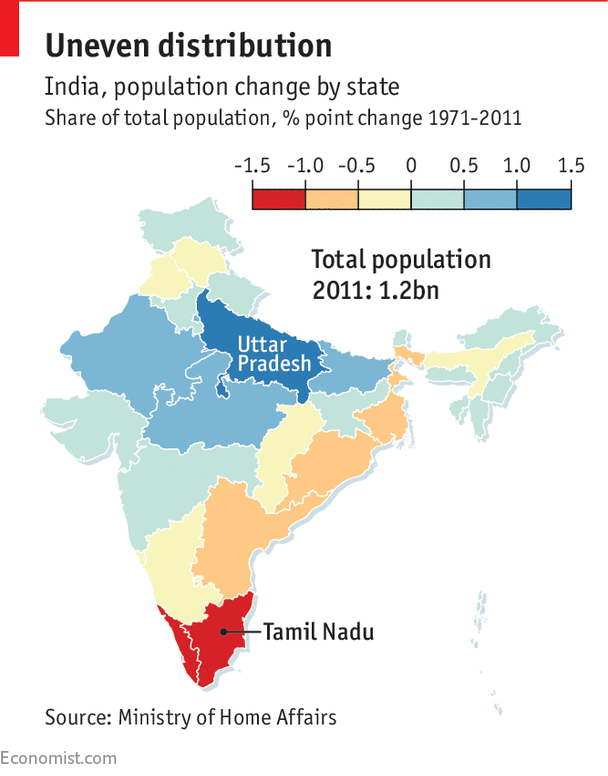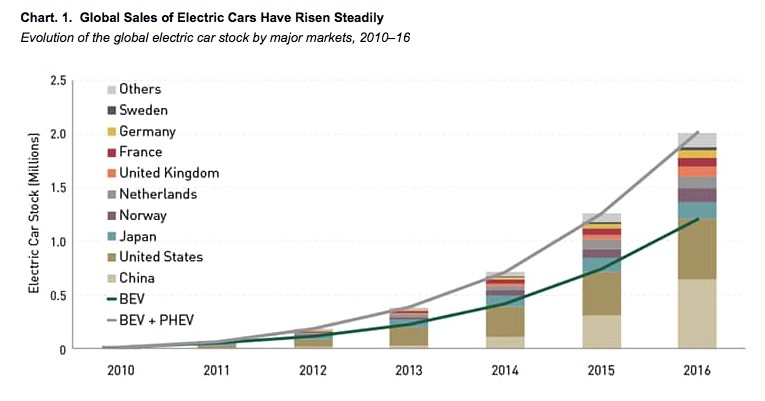Silver has been dead money over the past year or so, relentlessly grinding sideways to lower. That weak price action has naturally left this classic alternative investment deeply out of favor. Silver is extremely undervalued relative to gold, while speculators’ silver-futures positions are extraordinarily bearish. All this has created the perfect breeding ground to birth a major new silver bull market, which could erupt anytime.
Silver’s price behavior is unusual, making it a challenging investment psychologically. Most of the time silver is maddeningly boring, drifting listlessly for months or sometimes years on end. So the vast majority of investors abandon it and move on, which is exactly what’s happened since late 2016. There’s so little interest in silver these days that even traditional primary silver miners are actively diversifying into gold!
But just when silver is universally left for dead, one of its massive uplegs or bull markets suddenly ignites. Some catalyst, typically a major gold rally, convinces investors to return to silver. Their big capital inflows easily overwhelm the tiny global silver market, catapulting this metal sharply higher. Silver skyrockets to amazing wealth-multiplying gains, dwarfing nearly everything else. This reinvigorates silver’s cult-like following.
Silver’s dominant primary driver has long been gold, which controls all precious-metals sentiment. When gold isn’t doing anything exciting, silver languishes neglected. But once gold rallies high enough for long enough to convince investors a major upleg is underway, capital starts returning to silver. Thus silver is effectively a leveraged play on gold, amplifying its price action. Silver never soars unless gold is strong.
This psychological relationship is so ironclad it may as well be fundamental. The global silver and gold supply-and-demand profiles are technically independent, with little direct linkage physically. But when investment demand flares to drive gold higher, parallel silver investment demand soon materializes. So silver and gold often move in lockstep, especially when gold’s price action is interesting enough to catch attention.
All this makes the Silver/Gold Ratio the most-important fundamental measure for silver prices. The lower silver prices happen to be compared to prevailing gold ones, the greater the odds a major silver mean-reversion rally is imminent. And today silver is almost as low relative to gold as it’s ever been in the past century! This first chart looks at the SGR, or more precisely the inverted GSR, over the past 13 years or so.
The SGR calculation results in tiny hard-to-parse decimals, like this week’s 0.012x. So I prefer to use the gold/silver ratio instead, which yielded a cleaner 81.9x as of this Wednesday. Charting this GSR with its axis scaled upside down produces the same SGR line, but with far-more-brain-friendly numbers. This shows that silver is extremely undervalued relative to gold today, which is super-bullish for this neglected asset.
(Click to enlarge)
Again this week the SGR was running at just 81.9x, meaning it took almost 82 ounces of silver to equal the value of a single ounce of gold. So far in 2018, the SGR has averaged 79.6x. As you can see in this chart, that’s extremely low. There have only been two other times in modern history where silver looked worse relative to gold, late 2008’s first-in-a-century stock panic and early 2016’s secular-bear-market lows.
Because of silver’s tiny market size, it’s an incredibly-speculative asset. When investment capital flows really shift, silver can soar or plunge with shocking violence. Silver’s speculative nature makes it far more susceptible to general market psychology than gold. Silver acts like a small fishing boat battered around in the choppy waves of sentiment, while gold is more like a supertanker punching through them.
That 2008 stock panic was the first since 1907, one of the most-extreme fear events of our lifetimes. Technically a stock panic is a 20 percent+ plummet in the major stock-market indexes in less than two weeks. The flagship S&P 500 stock index indeed collapsed 25.9 percent in exactly two weeks in early October 2008, which terrified everyone. If felt like the world was ending, so investors and speculators sold everything to flee to cash.
Gold weathered that storm well, only sliding 3.3 percent in that wild stock-panic span. But the overpowering fear scared traders into hammering silver 23.7 percent lower. On exceptional stock-market down days, silver tends to split the difference between the S&P 500 and gold. We’ve seen that recently as well, during this new stock-market correction since early February. Silver is particularly sensitive to prevailing herd sentiment.
Between September and December 2008 straddling that stock panic, the SGR averaged just 75.8x. Silver was radically undervalued relative to gold, an anomalous state that has never been sustainable for long. The resulting mean reversion and overshoot higher was enormous, yielding stupendous gains for silver investors. Silver ultimately bottomed at $8.92 per ounce in late-November 2008, at a super-low 83.5x SGR.
Over the next 12.4 months silver rocketed 115.4 percent higher out of those extreme stock-panic lows, which restored the SGR to 63.2x. But that was still low. In the years leading into that stock panic, the SGR averaged 54.9x. For decades a mid-50s SGR has been normal, with silver generally oscillating around those levels compared to gold. Miners had long used 55x as a proxy for calculating silver-equivalent ounces.
Once silver falls to extreme lows relative to its primary driver gold, the inevitable resulting mean reversion rarely stops near the average. Instead it tends to overshoot proportionally to the upside, fueling massive gains. Silver started returning to favor in late 2010 and early 2011 as gold powered to major new highs. That ultimately climaxed with silver enjoying popular-mania-like popularity in late April 2011, at $48.43 per ounce.
That made for a total bull market out of those extreme stock-panic lows of 442.9 percent over 2.4 years! At its peak, the SGR had soared to 31.7x. Silver can’t sustain anomalously-high prices relative to gold either, so that bull soon rolled over as I warned the month before that peak. The key takeaway today is silver’s extreme stock-panic lows birthed a major new bull market. Silver can’t stay crazy-low relative to gold for long.
Unbelievably silver in 2018 is even more extremely undervalued than during those 4 months surrounding that stock panic! Again the SGR is averaging just 79.6x year-to-date. That’s considerably worse than during the stock panic which saw 75.8x over a similar time span. Such incredibly-low silver prices are no more sustainable now than they were then. That’s why a major new silver bull is likely coming very soon.
Interestingly the SGR popped right back up to its traditional mid-50s average after 2008’s stock panic as well. Between 2009 and 2012, the SGR averaged 56.9x. Those were the last quasi-normal years for the markets before the Fed’s unprecedented open-ended third quantitative-easing campaign started to wildly distort everything in 2013. Everything since then is literally a central-bank-conjured illusion that will shatter.
If silver merely mean reverts out of today’s worse-than-stock-panic extreme lows, regaining a 55x SGR would catapult it near $24.25 at this week’s $1333 gold levels. That’s almost 50 percent higher than today’s deep lows! From this week’s wild 81.9x SGR low, a proportional overshoot back up to a 28.1x SGR would blast silver back near $47.50. That’s 191 percent higher from here, nearly a triple, making for big gains.
All it will take to get silver mean reverting is a convincing gold upleg. Investors will return to silver once gold rallies high enough for long enough for them to believe its climb is sustainable. Then silver will take off and amplify gold’s gains. Gold powered 106.2 percent higher during that post-stock-panic silver bull where it soared 442.9 percent, making for 4.2x leverage. Gold also fueled silver’s last reversion rally out of extreme lows.
From 2013 to 2015, the stock markets surged relentlessly as the Fed’s vast QE money creation directly levitated them. Gold is an alternative investment thriving when stock markets weaken, so it was largely abandoned in those weird years. Gold ultimately slumped to a 6.1-year secular low in December 2015 leading into the Fed’s first rate hike of this cycle. That pummeled silver to its own parallel 6.4-year secular low.
In late 2015 silver felt a lot like it does today. No one wanted anything to do with it, everyone believed it was dead. Investors and speculators alike wouldn’t touch silver with a ten-foot pole near those lows, convinced it was doomed to spiral lower indefinitely. Yet out of that very despair a new silver bull was born. Over the next 7.6 months into August 2016, silver powered 50.2 percent higher on gold’s new 28.2 percent upleg.
Unfortunately that new mean-reversion silver bull ended prematurely as gold’s own young bull suffered a temporary truncation. The extreme stock-market rally erupting after Trump’s surprise election victory on euphoric hopes for big tax cuts soon sapped the wind from gold’s sails. So it dragged silver lower during much of the time since. But the new stock-market correction proves that stocks-strong-gold-weak trend is ending.
That’s super-bullish for silver, especially with it trading at stock-panic-like extreme lows compared to where gold is today. As these wildly-overvalued stock markets continue sliding lower on balance, gold will return to favor. The resulting capital inflows driving it higher will get investors and speculators alike interested in silver again. And just like after past extreme lows, their buying will catapult silver sharply higher.
Today’s extreme undervaluation in silver relative to gold is reason enough to expect a major new silver bull to ignite soon and start powering higher. But silver’s bullish outlook gets even better. The silver-futures situation today is nearly as extreme, with speculators making exceedingly-bearish bets on silver. These will have to be reversed as gold rallies, unleashing massive silver buying that will quickly drive it higher.
Short-term silver-price action is dominated by speculators’ silver-futures trading. The extreme leverage inherent in silver futures lets these guys punch way above their weight in terms of silver-price impact. Each silver-futures contract controls 5000 troy ounces of silver, worth $81,400 even at this week’s very-depressed prices. Yet the maintenance margin required to hold a contract was only $3,600 this week!
That means silver-futures speculators can run extreme leverage up to 22.6x, which is outrageous. Most investors run no leverage at all of course, and the legal limit in the stock markets has been pegged at 2x for decades now. Compared to an investor owning silver outright, each dollar silver-futures speculators are trading can have over 20x the price impact on silver! This gives futures traders wildly-outsized influence.
Every week their collective silver-futures positions are detailed in the CFTC’s famous Commitments of Traders reports. The recent reads are every bit as bullish for silver over the coming months as the SGR is over the coming years! All it will take to get silver surging higher again is for these universally-bearish traders to start buying again. And with the extreme leverage they run, the markets will force them to buy.
This chart shows speculators’ collective long and short positions in silver futures in green and red. They are now barely long silver while heavily short, making for exceedingly-bearish collective bets. Those will have to be unwound relatively rapidly once gold’s stock-market-selloff-fueled rally inevitably starts pulling silver higher again. This is the most-bullish silver-futures situation seen since just before silver’s last bull was born!
(Click to enlarge)
Let’s start on the short side, since that’s where speculators’ big silver-futures buying will begin. In the latest CoT week before this essay was published, current to Tuesday March 27th, speculators had total silver-futures shorts of 87.6k contracts. That’s truly extreme. Out of the 1004 CoT weeks since back in early 1999, that’s the 5th-highest spec shorting levels ever seen! Past extremes were never sustainable.
Note above that every single time the red spec-shorts line surged to highs, silver was bottoming ahead of a major rally ignited by short covering. That was true in late 2015 when silver’s latest bull was born, in mid-2017 during gold’s and silver’s summer-doldrums lows, and in late 2017 which saw extreme silver-futures short selling leading into another Fed rate hike. Silver rallied sharply after each shorting spike.
Silver-futures speculators are always wrong at extremes, because their very collective trading is what spawns those extremes in the first place. Once these guys have expended all their capital firepower to throw heavily short silver, there’s no one left to short sell it. Soon some get nervous and start to buy to cover their existing shorts. The only way to exit futures shorts is to buy offsetting long contracts to close positions.
And once short-covering buying starts on the periphery, the whole herd of speculators soon has to join in or risk truly-catastrophic losses. At today’s 22.6x max leverage available in silver futures, a mere 4.4 percent silver rally would wipe out 100 percent of the capital risked shorting it! So as soon as silver starts rallying when speculators are extremely short, they are forced to rush to buy to cover which catapults its price sharply higher.
No matter where the SGR happened to be, the 5th-highest spec shorts in silver-futures history would be wildly bullish for the near-term. But that’s not the whole silver-futures picture. It’s not just the speculators on the short side of the trade that are too bearish on silver, so are the long-side guys. In this latest CoT week, total spec silver-futures longs were only running 95.0k contracts. That’s just over a 26.2-month low!
Speculators’ collective bullish bets on silver via futures are slightly above their lowest levels since early 2016 when silver’s last bull market erupted! Unlike short-side traders who are legally obligated to buy to cover once silver starts rallying, new long-side buying is discretionary. But that very short covering drives silver higher fast enough to make the bearish long-side traders want to buy back in too, amplifying silver’s rally.
There’s nothing more bullish for silver over coming months than the rare combination of extremely-high shorts and very-low longs! This hasn’t been seen since late 2015 around silver’s 6.4-year secular low. Once silver started climbing on a parallel gold rally driven by short covering in its own futures, silver was off to the races on big futures buying. Speculators rushed to cover their excessive shorts and rebuild meager longs.
The resulting 30.0k contracts of silver-futures short-covering buying and another 55.6k of long buying catapulted silver 50.2 percent higher over the next 7.6 months. That adds up to 85.6k contracts of spec silver-futures buying. Today’s situation is even more bullish. If total spec shorts and longs return to their past year’s low and high, we’re looking at 54.5k contacts of short covering and another 59.5k of long buying!
That adds up to colossal silver-futures buying potential of 114.0k contracts over the next half-year or so. That’s the equivalent of a staggering 570m ounces of silver, or nearly 2/3rds of the latest read on annual world silver mine production! The potential silver upside that would be fueled by silver-futures buying of this magnitude is enormous. I suspect the resulting silver bull will dwarf the last +50.2 percent one in 2016’s first half.
Once silver starts rallying decisively on silver-futures buying, investors with their vastly-larger pools of capital will also start returning. Bullish analyses will explode, highlighting silver’s deep undervaluation relative to gold per the Silver/Gold Ratio. That will fuel bullish sentiment driving even more buying. Bull markets’ virtuous circle is buying begetting more buying. The more silver rallies, the more people want to buy it.
I’d be very bullish on silver with only a stock-panic-level SGR, only extreme spec silver-futures shorts, or only very-low spec silver-futures longs. But seeing all three at once, at a time when gold is rallying as the stock markets finally roll over out of their fake central-bank-spawned levitation, is truly extraordinary! This is literally the most-bullish setup for silver seen in years, so smart contrarian traders should be really long.
History proves that once silver starts moving, it will likely rally fast. As always, the biggest gains will be won by the fearless contrarians who bought in early before everyone else figures this out. Investors and speculators alike can play silver’s big coming upside in physical bullion itself, the leading SLV iShares Silver Trust silver ETF, and the silver miners’ stocks. But only the latter will greatly leverage silver’s gains.
Just last week I wrote a comprehensive essay exploring the recent Q4’17 results of the world’s major silver miners included in the leading SIL Global X Silver miners ETF. They are mining silver at average all-in sustaining costs of just $10.16 per ounce, far below even today’s low silver prices. So all of silver’s new-bull-market gains will be pure profit, leading to exploding earnings driving silver miners’ stocks far higher.
During 6.9 months roughly coinciding with early 2016’s silver bull, SIL rocketed 247.8 percent higher! That’s about 4.9x upside leverage to silver’s own gains. And given how absurdly low silver-stock prices are today, silver miners have similar-if-not-greater potential to amplify silver’s even-larger gains in its next bull. The elite major silver miners with superior fundamentals could be the best-performing stocks in all the markets.
The bottom line is a new silver bull is coming. Silver’s long and vexing sideways-to-lower grind has left it as undervalued relative to gold as during 2008’s stock panic. That anomaly was resolved by silver more than quintupling over the subsequent years in a mighty mean-reversion-overshoot bull. On top of that, silver-futures speculators’ short positions are at extreme highs while their opposing longs are at bull-birthing lows.
These wildly-bearish traders will be forced and motivated to aggressively buy silver futures once silver starts rallying decisively. That will be driven by gold strength like usual. Stock-market weakness ignites gold investment demand, driving both precious metals higher. Today’s silver setup is the most bullish in years. Everything is perfectly aligned for a massive new silver bull market to get underway any day now.


















